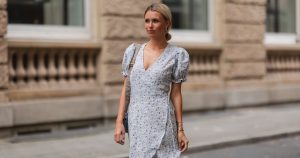The North Atlantic Treaty Organization (NATO) is escalating its military presence and technological capabilities in the Baltic Sea region to counter a perceived campaign of destabilization by Russia. This campaign, according to NATO Secretary General Mark Rutte, involves cyberattacks, assassination attempts, and sabotage targeting critical infrastructure, including undersea internet cables and energy pipelines. Rutte’s remarks came during a summit in Helsinki, where he highlighted the importance of protecting these vital assets, noting that 95% of internet traffic relies on submarine cables. Recent incidents, including damage to cables linking Lithuania and Sweden, Germany and Finland, and Estonia and Finland, have heightened concerns, with investigations pointing towards potential deliberate acts of sabotage. While investigations are ongoing, Russia is the prime suspect in these incidents, according to NATO officials.
In response to these threats, NATO is implementing a multi-pronged approach to bolster security in the Baltic Sea. This includes deploying a small fleet of maritime drones for enhanced surveillance and initiating “Baltic Sentry,” an operation involving frigates and maritime patrol aircraft to monitor activity in the region. These measures aim to deter further attacks and send a clear message that NATO will respond decisively to any threats against critical infrastructure within its sphere of influence. Finnish President Alexander Stubb echoed this sentiment, emphasizing the need for both national and international action to safeguard vital assets. This coordinated response underscores the seriousness with which NATO views the potential for disruption and its commitment to protecting the interconnected infrastructure that underpins modern societies and economies.
A key focus of NATO’s efforts is tackling the challenge posed by Russia’s “shadow fleet” of tankers, which are allegedly used to circumvent Western sanctions imposed on Russian oil sales. Leaders at the Helsinki summit pledged to utilize all available means under international law to take action against suspicious vessels operating in the Baltic Sea. This includes the possibility of boarding, impounding, and arresting ships involved in illicit activities or posing a threat to critical infrastructure. The seizure of a Russian oil tanker by Finnish police last month, suspected of damaging the Estlink-2 power cable connecting Finland and Estonia, exemplifies this proactive approach. The incident underscores the determination of Baltic nations to enforce regulations and protect their energy security interests.
The challenge of monitoring maritime activity in the Baltic Sea is substantial, with approximately 2,000 ships transiting the region daily. Latvian President Edgars Rinkēvičs acknowledged the difficulty of providing complete protection but emphasized that a strong deterrent signal, coupled with robust enforcement, could significantly reduce the incidence of such incidents. While acknowledging the impossibility of achieving 100% security, NATO’s approach focuses on increasing the perceived risk for those engaging in illicit activities or posing a threat to critical infrastructure. This strategy aims to dissuade potential saboteurs and protect vital assets in the Baltic Sea region.
Germany has also committed to contributing to the “Baltic Sentry” mission, with Chancellor Olaf Scholz confirming the nation’s participation using available naval capabilities. The specific contribution in terms of ships and planes will vary based on deployment possibilities, demonstrating the flexible approach adopted by NATO members to address the evolving security landscape. This collective effort underscores the alliance’s commitment to safeguarding critical infrastructure and maintaining stability in the region.
The heightened tensions and suspected acts of sabotage in the Baltic Sea highlight the increasing importance of protecting critical infrastructure in an interconnected world. NATO’s response underscores the need for international cooperation and a robust deterrent posture to counter potential threats from state and non-state actors. The focus on enhanced surveillance, legal enforcement, and the possibility of direct action against suspicious vessels demonstrates a proactive approach to safeguarding vital assets and maintaining security in a strategically important region. The incidents also serve as a reminder of the vulnerability of undersea infrastructure and the potential for disruption to global communications and energy supplies. NATO’s response represents a commitment to deter further attacks and protect the vital lifelines of the modern world.










